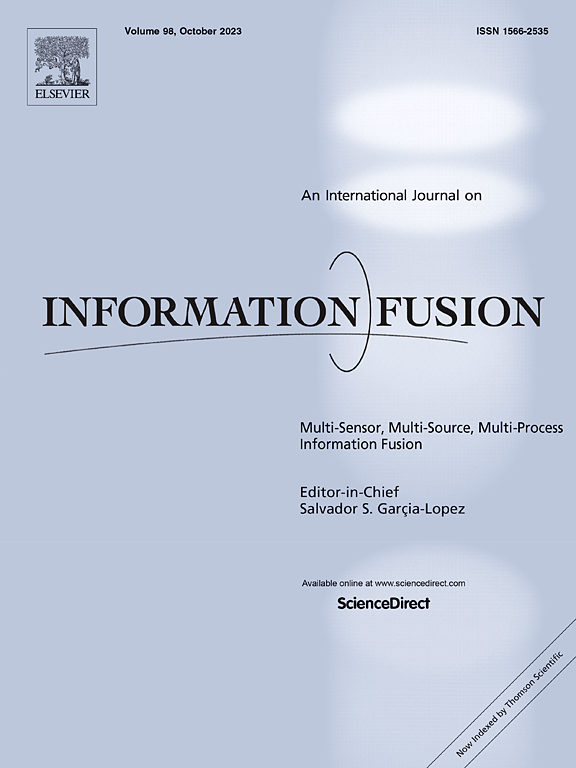A lightweight hierarchical feature fusion network for surgical instrument segmentation in internet of medical things
IF 15.5
1区 计算机科学
Q1 COMPUTER SCIENCE, ARTIFICIAL INTELLIGENCE
引用次数: 0
Abstract
Minimally invasive surgeries (MIS) enhance patient outcomes but pose challenges such as limited visibility, complex hand-eye coordination, and manual endoscope control. The rise of the Internet of Medical Things (IoMT) and telesurgery further demands efficient and lightweight solutions. To address these limitations, we propose a novel lightweight hierarchical feature fusion network (LHFF-Net) for surgical instrument segmentation. LHFF-Net integrates high-, mid-, and low-level encoder features through three novel modules: the multiscale feature aggregation (MFA) module which can capture fine-grained and coarse features across scales, the enhanced spatial attention (ESA) module, prioritizing critical spatial regions, and the enhanced edge module (EEM), refining boundary delineation.
The proposed model was evaluated on two benchmark datasets, Kvasir-Instrument and UW-Sinus-Surgery, achieving mean Dice coefficients (mDC) of 97.87 % and 88.83 %, respectively, along with mean intersection over union (mIOU) scores of 95.87 % and 84.33 %. These results highlight LHFF-Net’s ability to deliver high segmentation accuracy while maintaining computational efficiency with only 2.2 million parameters. This combination of performance and efficiency makes LHFF-Net a robust solution for IoMT applications, enabling real-time telesurgery and driving innovations in healthcare.
面向医疗物联网手术器械分割的轻量级分层特征融合网络
微创手术(MIS)提高了患者的预后,但也带来了一些挑战,如能见度有限,复杂的手眼协调和手动内窥镜控制。医疗物联网(IoMT)和远程手术的兴起进一步要求高效、轻量级的解决方案。为了解决这些限制,我们提出了一种新的轻量级分层特征融合网络(LHFF-Net)用于手术器械分割。LHFF-Net通过三个新颖的模块集成了高、中、低层编码器特征:多尺度特征聚合(MFA)模块(可以捕获跨尺度的细粒度和粗粒度特征)、增强空间注意(ESA)模块(优先考虑关键空间区域)和增强边缘模块(EEM)(细化边界描绘)。在Kvasir-Instrument和UW-Sinus-Surgery两个基准数据集上对所提出的模型进行了评估,平均Dice系数(mDC)分别为97.87%和88.83%,平均交联分数(mIOU)分别为95.87%和84.33%。这些结果突出了LHFF-Net能够在仅使用220万个参数的情况下提供高分割精度,同时保持计算效率。这种性能和效率的结合使LHFF-Net成为IoMT应用程序的强大解决方案,可实现实时远程手术并推动医疗保健领域的创新。
本文章由计算机程序翻译,如有差异,请以英文原文为准。
求助全文
约1分钟内获得全文
求助全文
来源期刊

Information Fusion
工程技术-计算机:理论方法
CiteScore
33.20
自引率
4.30%
发文量
161
审稿时长
7.9 months
期刊介绍:
Information Fusion serves as a central platform for showcasing advancements in multi-sensor, multi-source, multi-process information fusion, fostering collaboration among diverse disciplines driving its progress. It is the leading outlet for sharing research and development in this field, focusing on architectures, algorithms, and applications. Papers dealing with fundamental theoretical analyses as well as those demonstrating their application to real-world problems will be welcome.
 求助内容:
求助内容: 应助结果提醒方式:
应助结果提醒方式:


